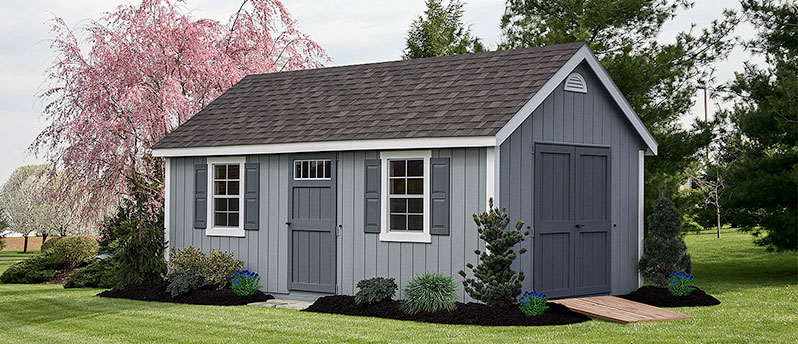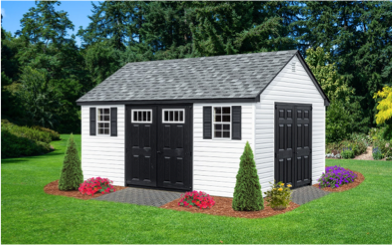
If you’ve been cramming lawnmowers, snowblowers, bikes, basketballs, lawn chairs, and boxes galore in your garage until it’s practically bulging, let’s face it, you need a shed! That’s the easy part. The hard part is looking at all your items and determining what size shed you’ll need to hold it all.
Is an 8’ x 8’ space enough? Would a 10’ x 16’ be more comfortable? Use the tips below to help you determine the best shed size.
How Big is Your Yard?
Your first step in determining what size shed you will need is to take a realistic look at your backyard. If your home sits on a lot of property, size probably won’t matter. But, if you have a smaller yard, you don’t want to choose a shed that will overwhelm your outdoor space.
Let’s say that, based on the size of your yard, you’re considering a 10’ x 12’ shed. Now, you need to consider all the additional space that needs to surround your shed. In addition to the 10’ x 12’ shed space, you’ll also need to account for:
- Additional “setback” from property lines, roads, or floodplains; every municipality has different setback regulations
- Shed foundations should be placed at least three feet away from fencing, trees, etc.
- Your shed foundation should be one foot larger than your shed on all sides
- Ensure you leave room to open the doors
What Are You Storing In The Shed?
The true test of what size shed you’ll need to purchase comes from how much you want it to hold. There are two ways we suggest estimating the amount of floor space you’ll need in your shed.
#1: Plot it Out on Graph Paper
Using a sheet of graph paper, measure out a rectangle or square that represents the size of your desired shed. Use a conversion system where each square on the graph paper represents 1/2’ (ex: 14’ equals 28 squares and 10’ equals 20 squares). From there, take measurements of the large equipment, boxes, lawn furniture, etc. you’ll want to store and place them on the graph. Remember to leave the surrounding space so you can eventually maneuver items out of the shed to use them!
#2: Physical Arrangement
Some people need a more realistic visualization of the space. If this is you, your best bet may be to physically arrange your items in an open space (start in your driveway). Just like with the graph paper, arrange your items as you would inside your shed, leaving a buffer of space around each item. Once everything is arranged, measure the total square footage around these items.
When plotting out storage for your large items, don’t forget you’ll need placement for the small stuff too. Take into account what items you can hang on the walls using a pegboard system. This is great for organizing shovels, weed whackers, folding beach chairs, small tools, etc. Many sheds designs can be built with loft space, providing a lot of extra storage space for smaller items.
Explore additional methods for organizing your shed by reading our blog post with additional organization tips.
A final piece of advice: When in doubt, always opt for a shed a little larger than you think you will need. This will help you account for any items you didn’t factor into your measurements or for any items you may purchase in the future.
Don’t Forget Permit Restrictions
Before you make your final purchase, be sure to check with your township or municipality. They may have set limitations on what size shed or building you can add to your property.

Have any more questions about purchasing an outdoor shed? Our shed buying guide covers commonly asked questions. You can also contact Penn Dutch Structures to speak directly to a professional.
Need Your Specific Storage Questions Answered?
Penn Dutch Structures will help you determine what size shed you need. View our current selection of sheds and then contact us to get your specific shed size.

